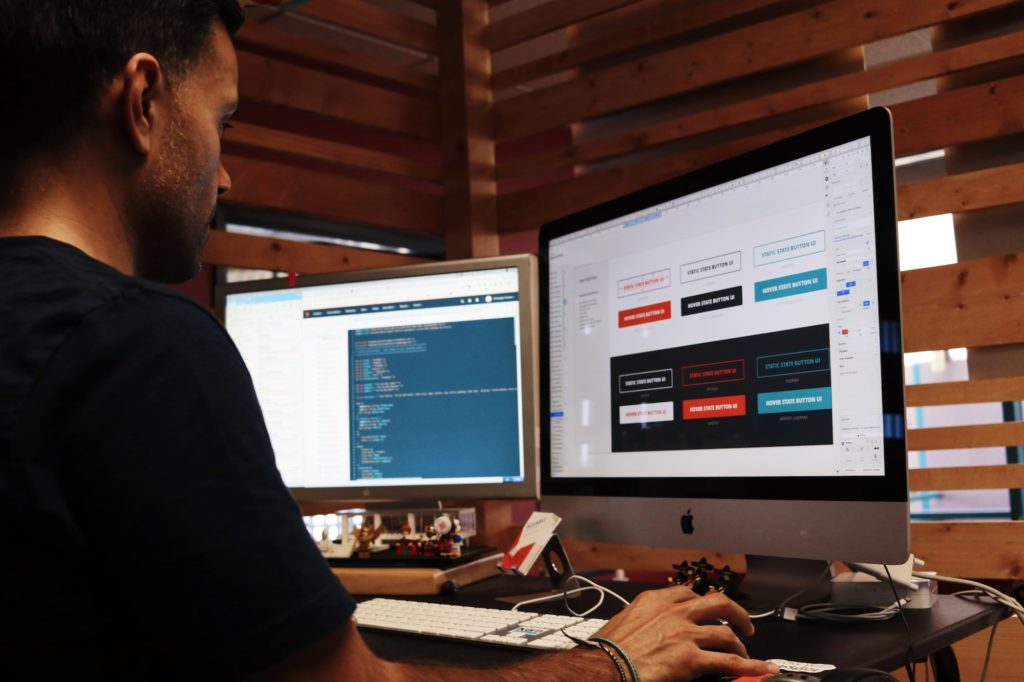Fostering disability-inclusion is a moral requirement and a competitive benefit in today’s ever-changing business environment. It enables businesses to tap into a wider talent pool and expertise and create a more diverse and innovative workforce.
This article explores applicable strategies and technology solutions that can lead a business toward a more inclusive future.
Disability Inclusion: What Is It?
Generally speaking, disability inclusion is the practice of including people with disabilities in all aspects of society. In business, it’s about having policies and procedures in place that support employees with disabilities and creating a welcoming workplace culture that is inclusive.
It’s a holistic strategy that honors the diversity of knowledge and expertise. True inclusion aims to develop a setting where everyone, regardless of physical or mental capacities, may prosper and actively contribute.
Why is Disability-Inclusion a Critical Part of Today’s Businesses?

Diverse Viewpoints
Innovative solutions and products are produced in Disability Inclusion workplaces that value diversity of views. Additionally, by having a varied workforce, businesses can better reflect the variety of their clientele, improving product development and marketing tactics.
Legal Compliance
Besides being a moral commitment, adhering to regulations, such as the American with Disabilities Act, that include people with Disability Inclusion is required by law in many countries worldwide. Compliance guarantees businesses avoid expensive legal disputes and reputational harm in many legal systems.
Talent Pool
Employing disability inclusion enables businesses to access a sizable talent pool that might otherwise go untapped; this comprises people with distinctive abilities and viewpoints who can promote innovation and development.
Enhanced Reputation
Organizations with inclusive policies often have a good reputation, attracting more clients and top talents. In today’s competitive market, having a strong reputation for diversity can give companies an advantage and more chances to improve customer satisfaction both in B2B and B2C markets.
The Role of Technology in Disability Inclusion
The role of technology in disability inclusion is crucial for transforming how businesses approach accessibility and motivating people with disabilities to participate fully in various activities.
Accessible Technology
Assistive technologies have been created to empower people with disabilities. Some of the needs these technologies address include screen readers for the blind, speech recognition software for people with mobility impairments, and communication tools for people with speech impairments.
Accessible digital content
Regardless of their physical or cognitive limitations, people with disabilities can access, perceive, understand, navigate, and interact with digital information and media that has been created and developed in an accessible way.
This concept is essential in a culture that is moving increasingly towards digitalization, where digital platforms like websites, mobile apps, documents, and multimedia materials act as the primary channels for communication and information dissemination.
The following are important qualities and suggestions for digital content that is accessible:
● Text alternatives: Providing alternate text for non-text elements like pictures, graphs, and charts is a part of making content accessible; this makes it possible for people who are blind or visually impaired to get the content through screen readers.
● Accessibility to the keyboard: Expanded keyboards have larger keys spaced further apart, making them easier to press for people with limited fine motor control.
● Videos and multimedia content: Multimedia content should be captioned and transcribed for people who are hard of hearing or deaf or who prefer or require text-based content.
Advanced Strategies for Disability Inclusion
Creating an Inclusive Culture
Creating an inclusive culture in the workplace requires a commitment from everyone, starting with leadership. Those in leadership positions must set the tone by demonstrating their commitment to inclusion and diversity; this can be done through concrete actions, such as:
- Investing in accessible communication platforms and tools
- Providing training on disability inclusion and unconscious bias
- Hiring people with disabilities and supporting them in their roles
In addition to leadership commitment, it is also essential to have consistent communication at all organizational levels about the value of an inclusive culture.
Setting Inclusive Recruitment Standards
It’s essential to reconsider conventional recruiting procedures to promote inclusion. Integrating cutting-edge technologies, such as AI-driven tools, has the potential to alter the game. These technologies can eliminate any potential bias based on disability and evaluate candidates solely on their qualifications. Many businesses have implemented these advanced assessment technologies, ensuring a transparent hiring process for all applicants.
Building an Accessible Environment
IoT devices and AR/VR technologies can revolutionize the workplace for employees with disabilities. By providing individualized support and simplifying daily tasks, IoT devices can help employees with disabilities to be more productive and independent. Additionally, immersive training and virtual tours can be provided using AR/VR, meeting various needs and ensuring every employee can succeed in the workplace.
Providing Access Beyond Just Physical Structures
Companies must develop their digital platforms to accommodate a range of disabilities, including visual and auditory impairments, in order to comply with standards like WCAG. For example:
● Use high-contrast colors and fonts
● Add alt text to images
● Provide keyboard navigation options
● Provide transcripts of videos and audio content
● Provide captions for videos.
Innovative businesses regularly undertake accessibility audits, using technology to expedite the process and ensure compliance and usability.
Setting Communication Standards
AI-driven language translation systems remove language barriers, enabling all employees, even those who speak other languages or have hearing impairments, to participate in global communication. They offer simultaneous transcriptions and translations. Screen readers and speech recognition bridge communication gaps, ensuring everyone can participate fully.
Raising Disability Awareness
Promoting inclusivity requires raising awareness, which companies can achieve through various approaches, such as the following:
- Imaginative social media campaigns.
- Immersive experiences, such as VR tours of accessible facilities.
- Virtual reality simulations help employees better understand the challenges faced by people with disabilities.
Incorporating Inclusive Values in Online Marketing
All online marketing initiatives should reflect the company’s core principles, including inclusivity; marketing materials should reflect the target audience, which includes people with disabilities.
Data analytics can be used to discover and target various customer segments, which can help you come up with campaigns resonating with a wider audience and improve customer engagement and brand perception.
Embracing Inclusion
Being inclusive is a journey, not a destination. Technology can help us along the way by providing tools for ongoing accessibility monitoring and data-driven decision-making. By fully embracing these technologies, companies can create a future where everyone can thrive in a welcoming and technologically cutting-edge environment, regardless of their background or circumstances.
Conclusion
In conclusion, as the corporate environment changes, so do consumer and employee expectations. Businesses interested in improving organizational performance, maintaining a competitive edge and promoting innovation must adopt cutting-edge disability inclusion methods.
By implementing these advanced tactics, your business can pave the way for a more inclusive, technologically sophisticated future where everyone can thrive regardless of background or circumstances.
About the Author
David started Be Accessible because of his passion for website accessibility and ADA compliance. He spent much of his career working for financial institutions creating websites and mobile applications. He earned his Master’s in Business Administration from Salve Regina University in Rhode Island. David is an advocate for creating web interfaces usable by all people. He enjoys recording music and playing soccer with friends.




